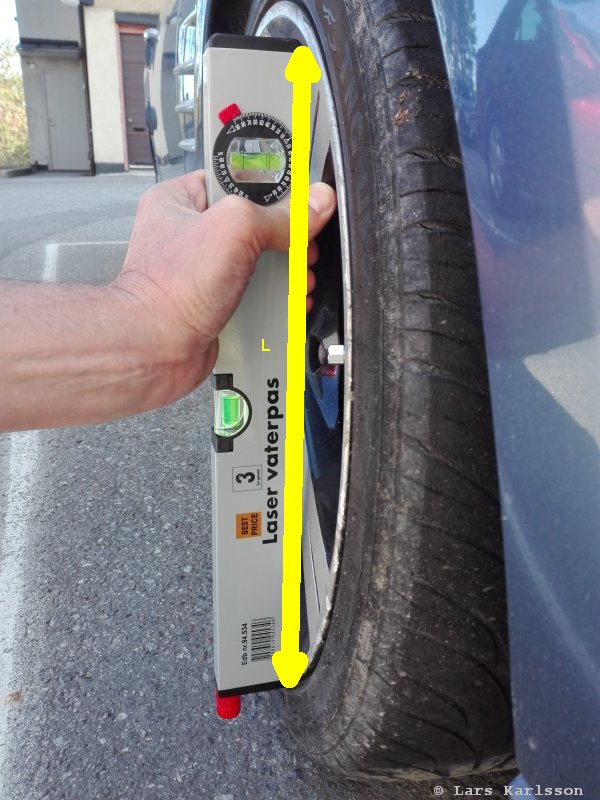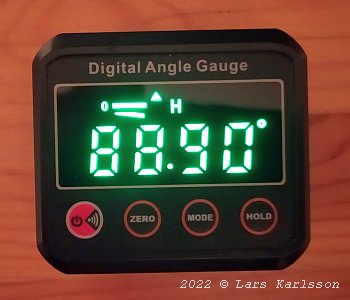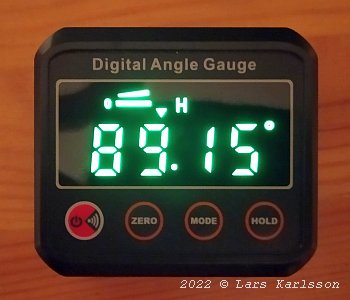|
Advertisement / Annons: |
Chrysler Crossfire
|

|
1, Wheel Camber angles:Wheel alignment according to Chrysler Crossfire Service Repair manual, page 28 to 37. How to do an easy check of camber angle:Here is an easy way to get a rough estimation of your car camber angles (there are many other ways too). You just have to use a spirit level. Find a parking lot that's in level where you can do this. Before do this, check the tire air pressure and only brake the car soft when parking, otherwise the angles can change. 
Hold the spirit level against the wheel rim, there is a built in angle reader, but very coarse. You can do it this way, but much easier and better with a digital angle meter. Measurement with a digital angle meter:Angle measurement with a digital angle instrument. It has a magnet on one side and I attached it to the disc brake:
The floor in the garage is a bit tilted down to the right which these figures are not corrected for.
I got the limits from here: JLtechno.com . I feel that I don't have the precision I need to do any adjustment and let it be where it's now. The rear are between the limits. In front the camber is too big, I think it comes from the lower rubber bushings are worn out. Have to check it later more carefully. But first I will replace the lower front bushings and then I replace the front springs as well.
|
|



